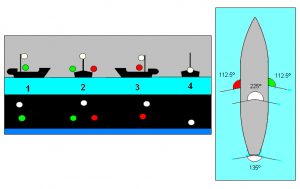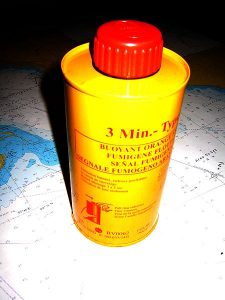A lot of paddlers have no other choice than to go kayaking alone. Some are professional anglers who habitually spend hours or even days out there in the water.
These days, even wildlife photographers are required to go one longer duration voyages in their kayaks. This leads to several safety concerns.
Canoe and Kayak safety equipment – The Basics
Experts suggest carrying the necessary equipment that can save your life if the unexpected is to happen. The equipment/tools/devices discussed in this post is suitable for lakes, slow/fast rivers, and the ocean.
We’ve also made a list of high quality tandem fishing kayak and kayak paddle under $100. Read these if you ever plan to buy any of these.
You Must Have the Following Equipment on a Kayak or Canoe at All Times
1. Life Jackets for Canoe and Kayak safety equipment
No matter how good a swimmer you are, a large current or a sudden increase in water flow rate can drag you underwater. In such a situation, most people feel completely powerless.
This is why it is essential to wear a lifejacket or attach a floatation device on your body.
A life jacket is constructed with one or more air chambers. The multiple air chamber acts as a buffer when one of the air chambers gets pricked. Although modern life jackets are coated with a rugged material such as coated nylon or vinyl, hence they are quite reliable.
Know About The Types of Life Jacket for Fishing- A Guide for Beginners
2. Navigational Light – Canoe and Kayak safety equipment
Steamboats operating in the ocean surrounding the United States are required by law to carry navigation lights on board.
Likewise, smaller fishing or touring vessels like a kayak or a canoe must be (although, not mandated by law) outfitted with navigational lights on all four sides. The below image depicts the location of navigational lights in a steamboat.

The vessel has red and green lights on the right and left sides, respectively. The front and rear lights are white.
The purpose of the navigational lights is to warn other vessels in the vicinity. The lights also indicate the boat’s direction of travel. The navigational lights are crucial in avoiding collisions. The same concept can be applied in a kayak or a canoe.
Top 9 Best Underwater Boat Lights Reviews in 2022 (Updated)
3. Visual Distress Signals – Canoe and Kayak safety equipment
A visual distress signal helps other paddlers in the proximity to locate a vessel in emergencies such as a collision with a tree or a ruptured kayak.
Some visual distress signal devices are intended for a specific time of the day. As you can see in the image below, a visual distress signal device is a container with a compressed substance in it. It generates colored smoke.

According to the United Coast Guard Boater’s guide, a kayaker is not allowed to broadcast a distress signal without a valid reason. Only send a distress signal when your life is in danger. Ignoring the rules and regulations can result in severe penalties.
Also, it is highly unlikely that a kayak paddler would drift more than ten miles off the shoreline. Sending a distress signal within a close range of the coastline would immediately alert the coast guard officers.
Mayday Message – Most Helpful Safety Equipment
Mayday is an emergency procedure word that indicates a potentially life-threatening situation. This word is used internationally (more so in the United States) in radio communications between a potential victim and the security helpline representative.
You can listen to the actual mayday call made by MV Summit Venture when it collided with the Sunshine Skyway Bridge in 1980.
If you find yourself in a potentially life-threatening situation when in water, place a 911 emergency call and respond with “mayday mayday mayday.“
You can also place a mayday call to inform the authorities about someone else in trouble. Later you can notify them about the longitude and latitude of the location (which can be retrieved via a GPS navigation system).
4. Flash Lights as Canoe and Kayak safety equipment
Flashlights serve a different purpose than that of navigational lights. They are larger and offer higher output than navigational lights (which are small LEDs).
Depending on the storage space available on the kayak, you can either have a hands-free headlamp or a sleek torch (shown in the image below).
A flashlight is mainly used to improve the visibility onboard or in water. Some anglers prefer to head out in water early in the morning, before sunrise. In adverse lighting conditions, a flashlight can come handy in sorting out the equipment on board.
Some flashlights can also be installed on the kayak. Hands-free flashlights can be useful when attaching bait to the hook.
5. Navigation Device for Canoe and Kayak safety equipment
A digital GPS navigation device has been around for decades. It lets a paddler know the geographical coordinates (longitude and latitude) of the vessel.
A GPS device is also used to trace the kayak path so the paddler can get back to the shore without getting lost. The best thing about a GPS device is you don’t need a wireless data signal or internet connection to access it.
A dedicated GPS satellite continuously transmits a radio signal at all times. The GPS is merely a receiver with a display screen. Some fish finders also come with in-built GPS.
If you happen to be an angler, you won’t need to purchase a separate GPS navigation device. Further, these systems are also equipped with maps (live and graphical) of the neighborhood region.
Canoe and Kayak safety equipment Summary
There is no questioning the fact that paddling is a dangerous hobby. You are taking a considerable risk by heading in the water all by yourself.
Hence, you must acknowledge and accept the risks associated with paddling. Whether you live on the east coast or the west coast, you must check the weather reports before going out.
Canoe and Kayak safety equipment Final Words
If you are a regular kayaker, you should have enough knowledge about low head dam danger.
What Should You Do When Approaching a Low-Head Dam in a Canoe or Kayak?
Read our guide on low head dam danger in a kayak or canoe if you have no knowledge about it.


